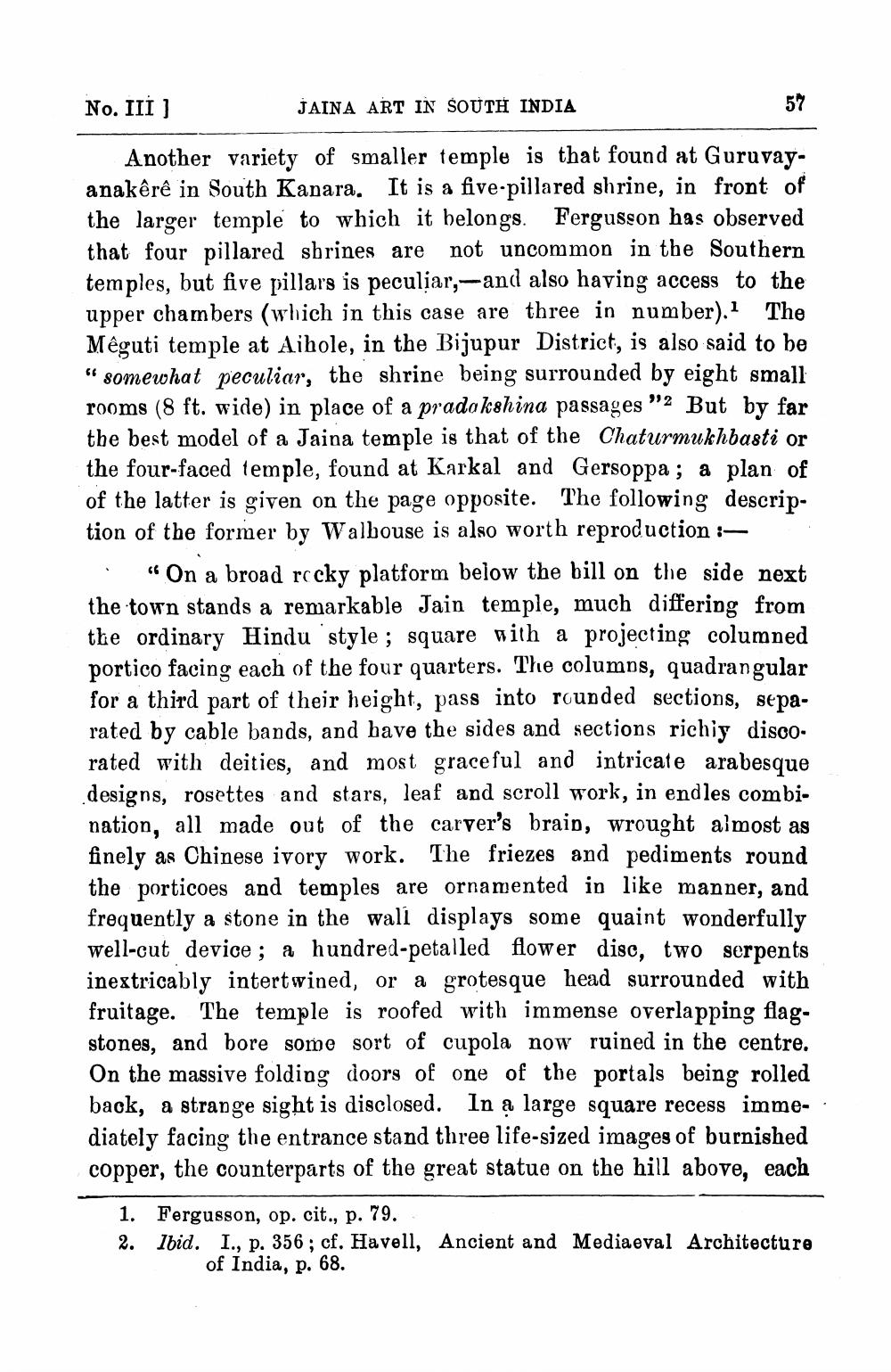________________
No. III)
JAINA ART IN SOUTH INDIA
Another variety of smaller temple is that found at Guruvayanakêrê in South Kanara. It is a five-pillared shrine, in front of the larger temple to which it belongs. Fergusson has observed that four pillared sbrines are not uncommon in the Southern temples, but five pillars is peculiar,-and also having access to the upper chambers (which in this case are three in number).1 The Mêguti temple at Aihole, in the Bijupur District, is also said to be “somewhat peculiar, the shrine being surrounded by eight small rooms (8 ft. wide) in place of a pradakshina passages "2 But by far the best model of a Jaina temple is that of the Chaturmukhbasti or the four-faced temple, found at Karkal and Gersoppa ; a plan of of the latter is given on the page opposite. The following description of the former by Walbouse is also worth reproduction :
“On a broad rocky platform below the bill on the side next the town stands a remarkable Jain temple, much differing from the ordinary Hindu style ; square with a projecting columned portico facing each of the four quarters. The columns, quadrangular for a third part of their height, pass into rounded sections, separated by cable bands, and bave the sides and sections richiy disco. rated with deities, and most graceful and intricate arabesque designs, rosettes and stars, leaf and scroll work, in endles combination, all made out of the carper's brain, wrought almost as finely as Chinese ivory work. The friezes and pediments round the porticoes and temples are ornamented in like manner, and frequently a stone in the wall displays some quaint wonderfully well-cut device; a hundred-petalled flower disc, two serpents inextricably intertwined, or a grotesque head surrounded with fruitage. The temple is roofed with immense overlapping flagstones, and bore some sort of cupola now ruined in the centre. On the massive folding doors of one of the portals being rolled back, a strange sight is disclosed. In a large square recess immediately facing the entrance stand three life-sized images of burnished copper, the counterparts of the great statue on the hill above, each
1. Fergusson, op. cit., p. 79. 2. Ibid. I., p. 356 ; cf. Havell, Ancient and Mediaeval Architecture
of India, p. 68.




